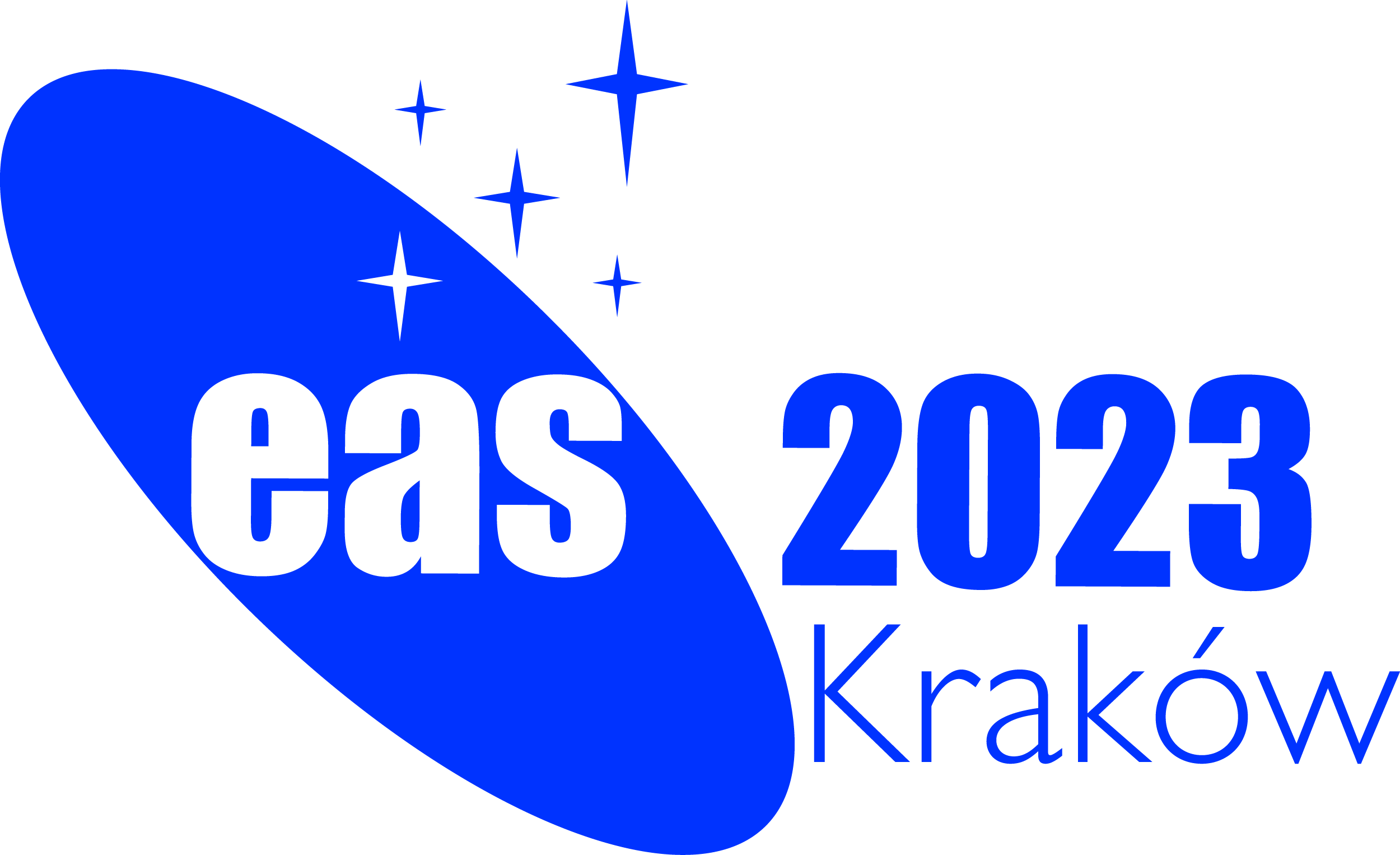Special Session SS2
10 July 2023
Gravitational wave sources in gas-rich environments
Aims and scope
The first detection of gravitational waves (GWs) by the LIGO/Virgo collaboration in 2015 has opened a new era in multi-messenger astronomy. The future of gravitational astronomy is particularly bright as several existing (e.g. PTA) and upcoming (e.g. LISA) facilities promise to cover a broad range of the GWs spectrum. The detection of the GW signals emitted by sources in the nHz-kHz spectrum, i.e. massive black hole binaries (MBHBs), extreme mass ratio inspirals (EMRIs) and stellar mass binaries, has the potential to probe gravity/fundamental physics at its extremes and to place stringent constraints on the laws governing our Universe.
All these GW sources however do not exist in vacuum, but their formation and evolutionary paths are intimately connected with the environment in which they reside. Gas-rich environments within galactic nuclei represent the perfect laboratories to probe the dynamics of the aforementioned GW sources, in particular hydrodynamic interactions, which are central for their evolution. Despite such recognised relevance, our theoretical understanding is still far from providing a comprehensive picture of how gas affects GW sources evolution at various stages.
Gaseous environments, by feeding gas to compact objects, also power bright sources of electromagnetic (EM) radiation that current (e.g. the optical Zwicky Transient Facility survey) and upcoming (e.g. the Vera Rubin Observatory in the 0.3-1 micron range) facilities can directly observe. Furthermore, X-ray observatories (e.g. eROSITA, XMM-Newton) have revealed intriguing phenomena like Quasi Periodic Eruptions (QPE) that could shed light on different processes possibly producing EMRIs around accreting MBHs. All these phenomena call for a concerted community effort in which theory and observations are combined to promote our understanding of compact binary sources.
The proposed meeting represents a perfect contact point between the different communities of EM and GW, both observations and theory wise. Through critical discussions, we envisage the fostering of new interdisciplinary collaborations in an informal and inclusive context in order to identify the critical steps that the community can undertake to advance our knowledge of the hydrodynamic phenomena driving forthcoming GW detections.
Programme
A number of pivotal questions will be addressed in 3 main sessions, each one composed of 1.5-hours blocks.
- Massive black hole binaries
- How does the gas drive the evolution of the binary orbital parameters? At which stage of the binary evolution is the gas effect dominant?
- Can we unambiguously identify MBHBs through spectroscopy and photometry measurements? At which stage of the evolution would this be more likely?
- Intermediate/extreme mass-ratio inspirals
- Which mechanisms do drive the EMRI formation in wet environments?
- How EM observations could shed light on the population of I/EMRIs?
- How does gas modify the observed GW waveform?
- Stellar mass black hole binaries
- Which fraction of LIGO/Virgo events has formed in wet environments? Is there a clear smoking gun or do we expect much degeneracy?
- What can we learn from joint GW and EM observations?
Invited speakers
- Mike Koss
- Laura Sberna
- Andrea Merloni
- Dan D'Orazio
- Andrea Derdzinski
- Hiromici Tagawa
Scientific organisers
Matteo Bonetti (University of Milano-Bicocca, SOC chair), Alessia Franchini (University of Milano-Bicocca, SOC chair), Alessandro Lupi (University of Insubria), Maria Charisi (Vanderbilt University), Margherita Giustini (Centro de Astrobiología INTA-CSIC)
Contact
matteo.bonetti @ unimib.it; alessia.franchini @ unimib.it
Updated on Mon Feb 13 18:58:07 CET 2023
|

 A power cut will shut down all EAS services on Tuesday, 10 January 2017 starting at 7:30 CET.
A power cut will shut down all EAS services on Tuesday, 10 January 2017 starting at 7:30 CET.


